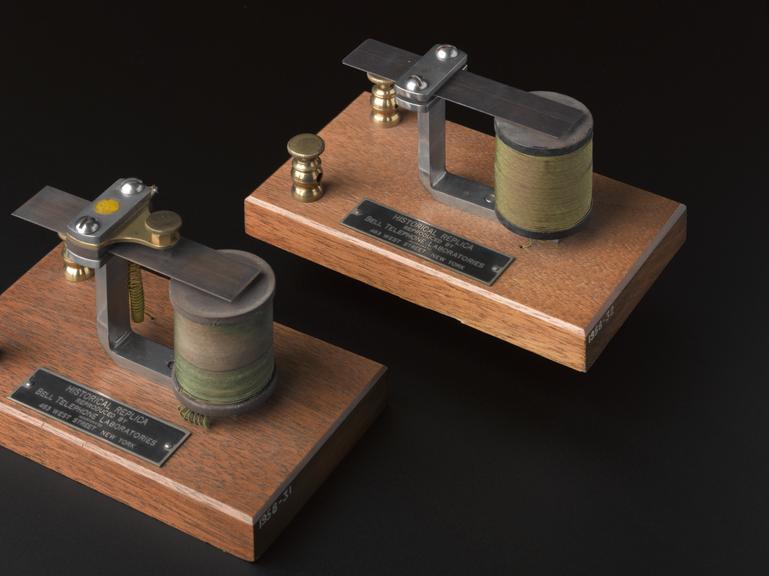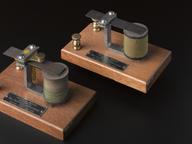

Bell's harmonic telegraph receiver, 1925-1958
- inventor:
- Alexander Graham Bell




Replica of Bell's 1875 harmonic telegraph receiver, made by Bell Telephone Laboratories Inc, Albany, New York, United States, 1925-1958.
Alexander Graham Bell (1847-1922) thought of an idea for sending a number of telegraph messages over a single pair of wires at the same time, and began experimenting in 1872. This replica represents a later experiment using vibrating reeds and electromagnets (rather than tuning forks). He used a number of reeds at the sending end, each tuned to a different frequency. By having the same number of reeds tuned to the same frequencies at the receiving end, he hoped he could make each respond only to the transmitting reed of the same frequency. Although this experiment was unsuccessful, it led to further experiments, and to his development of the telephone.
Details
- Category:
- Telecommunications
- Object Number:
- 1958-32
- Materials:
- wood (unidentified) and metal (unknown)
- Measurements:
-
overall: 75 mm x 130 mm x 75 mm, .33kg
- credit:
- Donated by Bell Telehpone Laboratories Inc




